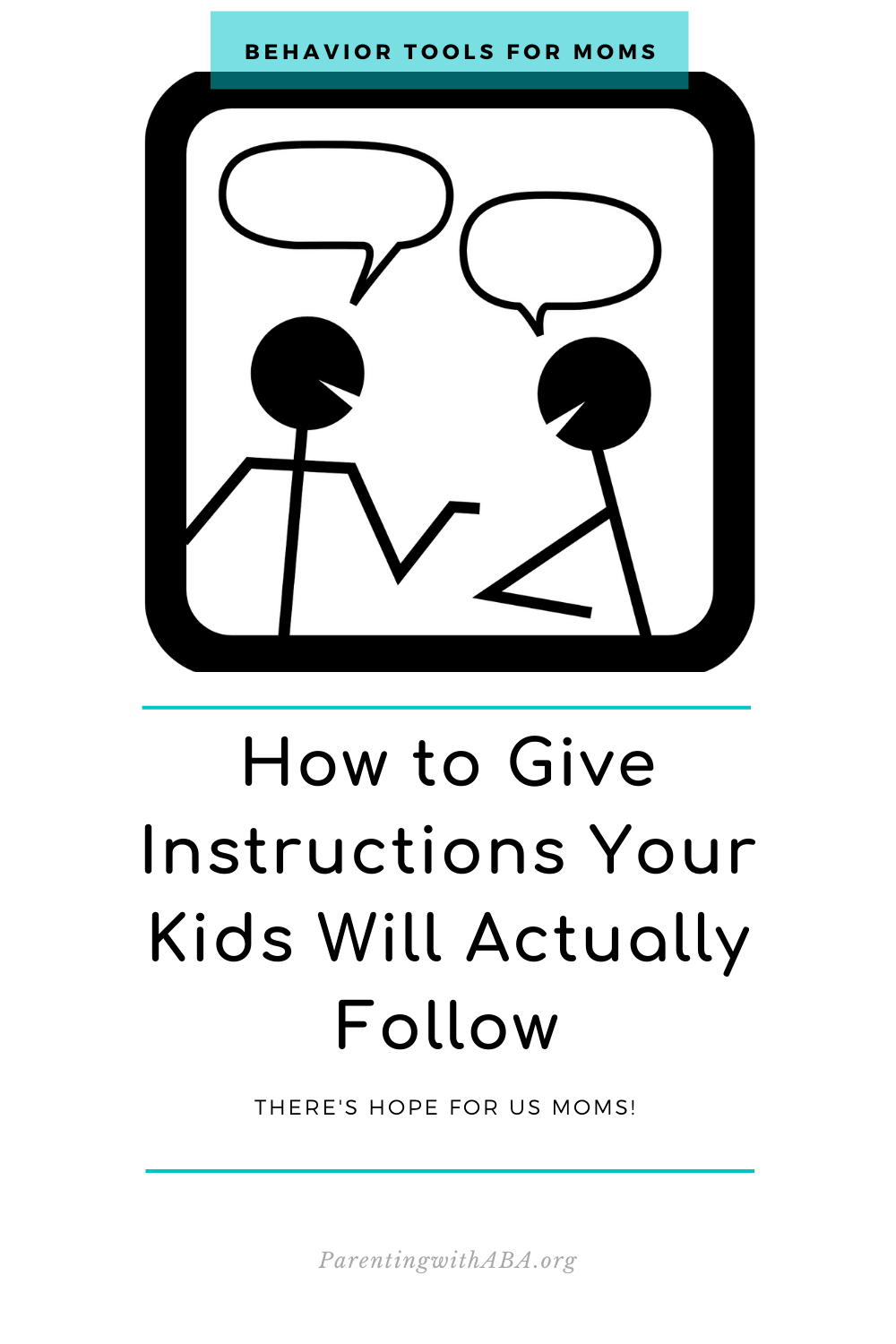Who is in control in your house? Are your kids running the show? In a previous post, I shared with you about instructional control. Go back and review it here. I’ll wait.
Instructional control basically means a positive working relationship, earning your child’s respect, and building cooperation with your child. It means when you give an instruction, it is followed (most of the time at least).
So we talked about pairing ourselves with reinforcement to show our kids that we are the providers of the FUN!
Now that our kids see that following mom’s instructions can lead to all the fun things, how do we actually GIVE those instructions? What do we say?
Tips for Giving Instructions Your Kids Will Follow
1. Tell, don’t ask.
What happens if you ask your child, “Do you want to come to the table for dinner?” They say no. If they don’t want to come to the table, answering no is totally appropriate. You asked. Instead tell them directly, “Come to the table for dinner.”
Another version is “Will you please pick up your toys?” Saying no or no right now is also appropriate. You are asking them so if they don’t want to do it, they’re not wrong. Tell your kids what you want them to do.
2. Get to the point.
Instructions should be short and sweet. “Brush your teeth.” Don’t go into a long diatribe about the value of good dental hygiene and expect your kids to realize that you meant they were supposed to be brushing their teeth right now. “It’s time to brush your teeth” is much easier to understand than a story about someone whose teeth turned green or fell out of their head and then how are they supposed to chew? Huh?
3. Lean on systems and routines in your house.
If your child has been known to argue with you when you give an instruction, then lean on the system. It’s harder to argue with a schedule or a clock. “It’s time to get ready for bed” instead of “go get ready for bed”. And it’s much much better than “I need you to get ready for bed.” If you have a routine or a schedule that’s actually written out or posted as pictures, lean on that big time! “Go check your schedule. What is it time for?”
4. Make sure they can actually do the thing.
“Go fold your laundry” is not appropriate for my 3-year old. That’s not a skill she can do independently. “Go hang up the clothes on your bed” is totally appropriate for my 6-year old. She knows how to do that. I’ve taught her. Before you spout out an instruction, make sure your child knows how to do that thing.

We all want our kids to actually listen to what we say and to actually do what we ask of them. The two ways we’ve talked about making that more likely are:
- Make things more fun. (Pair yourself with reinforcement.)
- Give simple, direct instructions using the tips here.
Stay tuned as we talk more in the future about using controlled choices and positive reinforcement to get your kids to follow instructions- the positive way!
Are you ready to learn more about how to use positive behavior tools to win at parenting?

Recent Comments